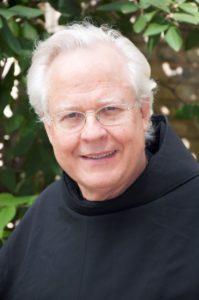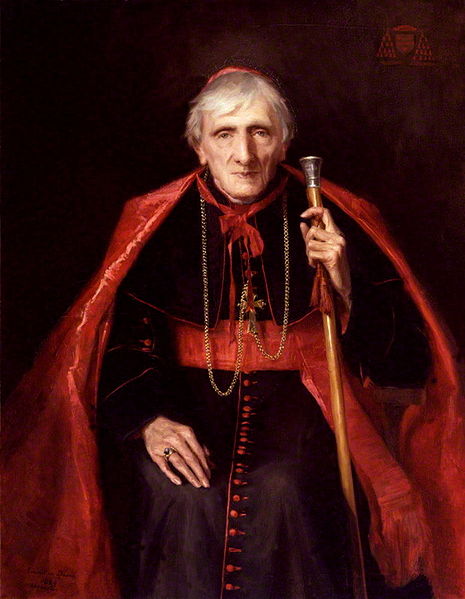Newman and the Gift of Modernity
[18th wk] “I will place my law within them, and write it upon their hearts” from Jer 31: 31-34;
“You are Peter, and upon this rock I will build my Church.” from Mt 16: 13-23
In December 1844, Newman set out upon the task of resolving his difficulties, notably with the Anglican Bishops over Tract 90. He knew the history of Christian thought, what was assertive and counter-assertive, what needed incubation. He knew the heresies that exaggerated the truth, or exaggerated partial truth which is grounds for heresy. Newman was empirical without being an empiricist. He never gave into the empirical error that all knowledge is based on experience, i.e. derived from the senses. Newman was always a free radical.
In mid-life Newman reflected deeply on “primal ideas.” Without an idea, there is no development. Idea is a Lockean term. The episteme of Locke are facts that one saw in the world. Americans remember Locke as a major philosophical influence behind the drafting of the American Constitution, a document that has lasted for almost two and a half centuries.
Newman pondered how ideas become explicated over time. Truth is found in history, not historicism. If a doctrine develops, is it true? Was it ever true? He saw the trap of the empiricist and used the language of empiricism to explode it. Some doctrines evidenced themselves even from the apostolic period. “You are Peter, and upon this rock I will build my Church.” To Evangelicals, the Council of Nicaea may not be required. To Luther, tradition was not required. His convenient answer was sola scriptura.
To Newman, all interpretive texts of Sacred Scripture from antiquity do not have the same rules of interpretation. Newman seems to favor comparing spiritual texts as St. Paul: “words not taught by human wisdom but the Spirit that is from God” (1 Cor 2, 12,13). However, doctrine is not a free radical to Newman. No doctrine can come into being, and none have, if they are not related to Sacred Scripture. Moreover, Newman understood what was congruent in Scripture in the 4th and 5th centuries, Nicaea, Constantinople, Ephesus and Chalcedon with the 19th century. He did not think that doctrines were repetitious but congruous. By 1845, his personal quest for truth brought him to conclude that High Anglicanism was a “pastiche.”
Newman asked: if ideas in political and legal institutions grow, why not in religion? His question led him towards a work of historical genius on the development of doctrine. It functions at the level of abstraction. The primal fact is Christ. An idea has different elements in history. E.g. Vatican I refused to engage modernity, while Vatican II, left no one out of engagement. Each Christian has a sharable, rich idea. An idea refracts itself in a plurality. In time the idea has further refraction, is reflected and shareable. Doctrine holds the community together. If an idea at the beginning seems too big or disruptive for any group, remember that an acorn becomes an oak, he said. An implicit idea gradually becomes explicated. An idea is planted in human minds. Inquisitiveness asks: is it true? Locke could not accept the organic model that an idea as a seed grows, is processed, then is transcended. The organic model made common sense to Newman.
If the “gift of modernity” comprises cheerers, weepers, and those who are both cheerers and weepers, as Cyril O’Regan contends, how do they align with the theological embrace of modernity by Christianity? If there are philosophical cheerers, it is more than likely that many are cheerers. Is a person a cheerer because he or she is a Christian? There are many yea-sayers in modern philosophy and modern religious thought to turn to. Newman saw the Lockean-inspired move at Oxford and its considerable impact on members in the Anglican Church in the 18th and 19th centuries. Whately’s exceptional influence on Newman, his fine tuning of Locke almost cost Newman his faith. Newman was drawn towards Rome for one because the Roman Church would prevail over too many cheerers that he saw in the Anglican Church. The cheerers were quite literally the Anti-Christ for him. Their example of Christianity was not real Christianity, but a counterfeit.
What would Newman say today? How might he apply the words of Jesus to Peter: “Get behind me Satan, you are not thinking as God does, but as human beings do”? Certainly, no one gets a free pass: Bishops, priests, parents, Catholics in political life. Newman helps priests in their increasingly difficult task to preach to disillusioned Catholics and those in public life.
The early 20th century movement of Catholic modernism did not go well. As a new priest after Vatican II, I did not grasp the complexity of modernity. If Roman Catholicism has reversed her verdict on Modernism, Newman will help with critical engagement. The Greek, pharmakon, and German Giften, are both cure and poison. Our Popes Francis, Benedict XVI, John Paul II, and Paul VI were never unequivocal lovers of modernity. The focus of their dislike with modern thought might be different, but they were not unequivocal cheerers. E.g., in 1966, Pope Paul VI and Archbishop Michael Ramsey of the Church of England were making great ecumenical progress. I rejoiced that Paul VI proposed John Duns Scotus, who was not yet beatified, as offering a plan for the reunification of the Anglican Church with the Roman. In 1973, the demand in England for ordination of women caused a rupture. Is Newman’s Anti-Christ fitting?
I refer to “Scotus and Newman in Dialogue”[1] a prescient, original, and forward looking study by my Franciscan mentor, Fr. Peter Damian Fehlner, OFM Conv. Newman is in step with yea-saying, nay-saying, and yea-and-nay-saying about modernity. Catholic thinkers engage the doubleness of the gift of modernity, cure and poison. Questions abound. Do they cheer for the same thing, weep for the same thing, and hope for the same thing? Can a bridge be built? Do they employ Vatican II against cleavage and in favor of negotiation? What intrinsic prospects for dialogue are there between Christian thought and traditions which might be attractive but illusory? Is Heidegger’s apocalyptic discourse a prospect? Newman answers: the safe handing on (traditio) allows a measure of hard-earned continuity in all of the discontinuity. In conclusion, Newman, a free radical, was a volcanic eruption. He did not identify as conservative nor liberal. Nor do I. Instead he courageously aligned with Francis of Assisi: Be Catholic!
Fr. Ed Ondrako, OFM Conv, eondrako@alumni.nd.edu, University of Notre Dame
______________________
[1] E. Ondrako, ed., The Newman-Scotus Reader (New Bedford: 2015, rpt canonization issue, 2019), ch. 7.
Fr. Edward J. Ondrako, OFM Conventual
Research Fellow Pontifical Faculty of St. Bonaventure, Rome
Visiting Scholar, McGrath Institute for Church Life
University of Notre Dame
Newman Conference, Holy Cross College, Aug 4, 2022

